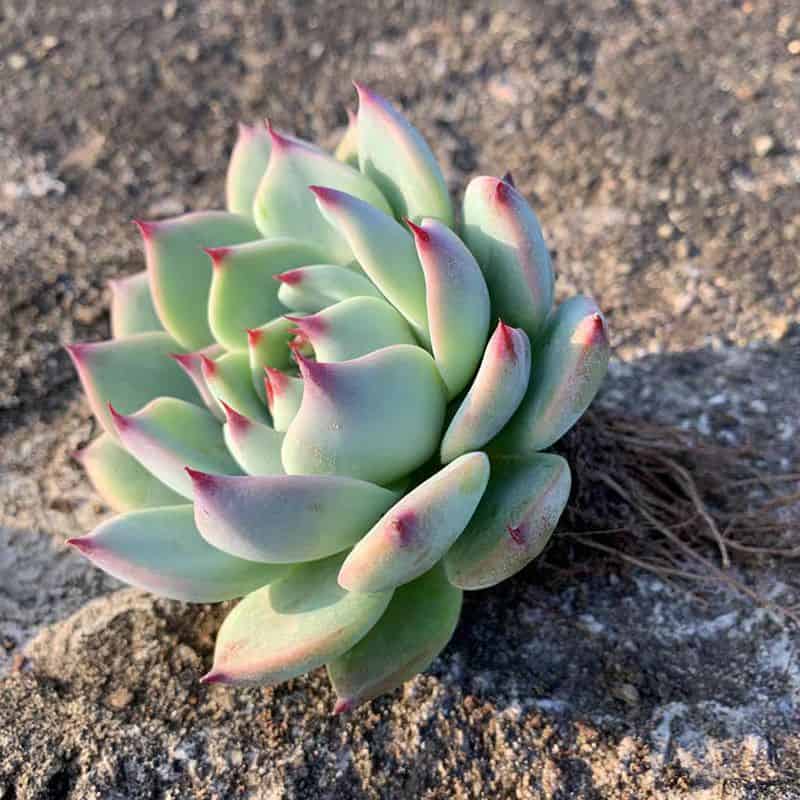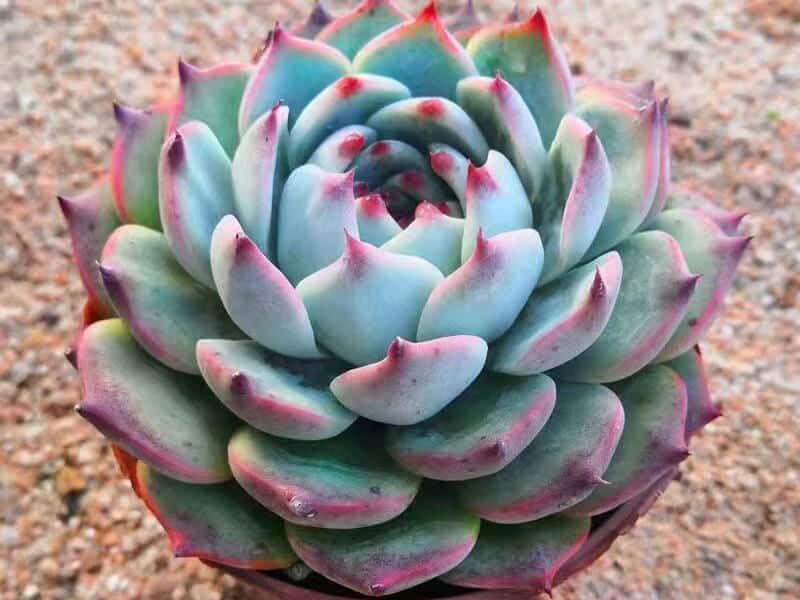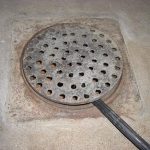An evergreen succulent plant from the Crassulaceae family of stonecrops is called Echeveria Chihuahuaensis, also known as Cat’s Claw. The edges of the blue-grey, or “glaucous,” leaves are pink-red in color. They form a rosette of around 10 cm in diameter. Long stems with coral-pink flowers and golden centers emerge in the spring. They grow to a height of around 25 cm. Place it in well-draining soil with direct sunlight for the best growth because it is delicate and cannot withstand frigid temperatures. The Royal Horticultural Society has given this plant the Award of Garden Merit.
Echeveria Chihuahuaensis has rosettes that develop on a short stalk close to the ground. In perfect circumstances, a single plant can grow to a diameter of 15 cm and a height of 10 cm. Rosettes gather in clusters on Chihuahuaensis. When a rosette reaches maturity, the bottom will start to develop offsets. After that, each offset will create its offsets. However, this succulent only produces a few offsets per growing season and is not particularly prolific. Every spring, Echeveria Chihuahuaensis blooms. Individual bell-shaped, pink flowers open on a long stalk where the blooms are produced. The flower’s inside is light yellow.

Echeveria Chihuahuaensis ‘Cat’s Claw’ Care
Echeveria Chihuahuaensis Cat’s Claw is a fast-growing plant that can be grown easily in mild climates without frost. This variety of succulents is distinct and grows in the spring. You can enjoy bright pink flowers when it blooms. It makes a lovely addition to your plant collection, especially if you display it in a lovely container.
Sunlight
Echeveria Chihuahuaensis Cat’s Claw requires strong light. Make sure this variety of succulent receives sunlight when you put it in a garden. For its growth, full to partial sun is preferable. Growing outdoors is preferable to indoors. The climate should be warm for this succulent. It can endure temperatures as low as -3.9°C (25°F) or zone 9b-11b. Chihuahuaensis should ideally be grown indoors if you reside in a chilly climate. The plant will thrive as long as it receives adequate sunlight.
Water
When given proper care, Echeveria Chihuahuaensis Cat’s Claw can be quite attractive. This variety of succulents needs the same regular watering as other succulents. To maintain the health of your Chihuahuaensis, the watering technique is crucial. Floating on the water shouldn’t be allowed, and too much water should be minimized. This succulent responds best to the wet and dry methods of watering. To prevent overwatering, the succulent must be kept under control.
Fertilizer
Cat’s claws do not require fertilization during their growth cycle because they are accustomed to flourishing in the wild in unfavorable environments. Early in the growing season, you can add a small amount of slow-release fertilizer, but it’s okay if you don’t use any. Fertilize sparingly while a plant is dormant since just so many nutrients that it can’t absorb could stunt its growth.
Soil
As with other succulents and cacti, make sure the soil is well-draining. It’s okay to use a pre-made succulent or cactus mix. Make your mix by mixing equal parts of fine gravel, coarse sand, and high-quality potting soil.
Temperature and Humidity
Echeveria Chihuahuaensis Cat’s Claw is a fast-growing plant that can be grown outdoors all year long in mild climates without frost.
Unfortunately, this plant is not frost resistant; therefore, if frost or snow is predicted throughout the winter, it will need to be taken inside. The plant will thrive outside if the temperature does not drop below 1C/33F. The Chihuahuaensis shouldn’t be killed by mild cold, but the leaves are prone to burn.
The best beauty is obtained when Chihuahuaensis is cultivated in as much sunlight as possible. This plant should be relocated under cover/in the shade/under 30% shade-cloth for the afternoon in summer during heatwaves of over 35C/95F because it may suffer burn marks from strong UV rays.

Echeveria Chihuahuaensis ‘Cat’s Claw’ Propagate
Propagating By Leaves: Whenever leaves from the mother plant propagate Chihuahuaensis, carefully remove a leaf. The leaf must be whole and completely detached from the stalk. This is how the propagation will function. Please wait a few days for it to callus before replanting. It would help if you planted your new succulent in well-draining soil. When the earth starts to dry out, don’t forget to water.
Propagating By Cutting: Use a clean knife or pair of scissors to properly cut a leaf from the mother plant for propagating Chihuahuaensis from cuttings. Please wait a few days for it to callus before replanting. You should plant your new succulent in well-draining soil. When the earth starts to dry out, don’t forget to water.
Propagating By Seeds: Even though this particular variety of succulents can be multiplied by seeds, it is not advised because they grow slowly. Place the seeds in a mixture of well-draining soil to begin the propagation process. You can utilize this technique outside. Indoor propagation is advised in cooler climates.
Pests and Plant Diseases
Pests Diseases
Despite being a favorite, Echeveria Chihuahuaensis is vulnerable to all the common pests that attack succulent plants.
Plant Diseases
Although aphids and the occasional mealy bug have been seen to assault the blossoms, they usually avoid Chihuahuaensis in favor of other, more flavorful plants.
These cheerful succulents thrive indoors and outdoors with lots of sunlight, mild temperatures, and sufficient air circulation. Chihuahuaensis looks lovely on a windowsill, on a sun porch, or in a rock garden.



